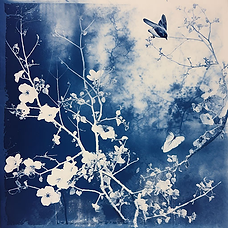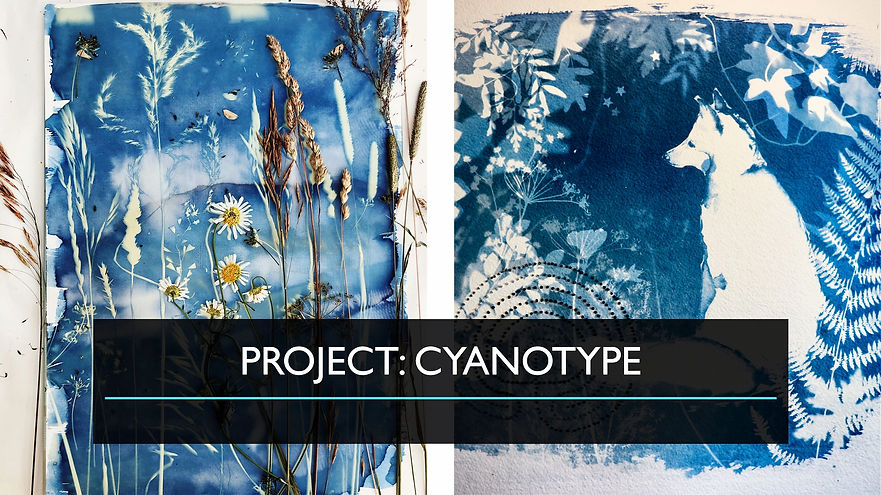A R T with M R. F A I R C H I L D


Visual Arts 2025-2026
CYANOTYPE PRINTMAKING
(Combining Art & Science)



Lessons:
WHAT IS CYANOTYPE?
Cyanotype printmaking is a photographic printing process that produces prints in a distinctive blue color.
The cyanotype process involves two main chemicals:
-
Ammonium iron(III) citrate
-
Potassium ferricyanide
When these chemicals are mixed, they create a light-sensitive solution, resulting in prints on paper.
Cyanotype was invented in 1842 by the British scientist John Herschel, who was experimenting with the use of chemicals for photographic purposes. However, it gained more fame and artistic use later on, particularly through the work of Anna Atkins, who is known as the first person to publish a book illustrated with cyanotype prints. She used it to document botanical specimens.

HOW DOES IT WORK?
-
Preparation: The solution of these chemicals is applied to a surface, such as paper, fabric, or even a wood panel. The coated surface is then allowed to dry in the dark, to prevent exposure to light before printing.
-
Exposure: Once the surface is dry, objects (such as leaves, flowers, or transparencies) are placed directly on top of the coated material. The material is then exposed to sunlight or UV light. The light causes a chemical reaction that turns the exposed areas of the surface a dark blue, while the areas that are blocked by the objects or transparency remain white or light blue.


-
Development: After exposure, the print is rinsed in water, which washes away the unexposed chemicals and leaves behind the blue image. The print is then dried, and the blue tone is fixed.

WHAT DO YOU NEED?
-
A photograph: This project will combine botanical (floral) elements and photography. The botanical elements will be collected outside, but the photo MUST be emailed to me to print as a negative on transparency paper. I will convert and print this image as a negative because during the cyanotype process, the darker areas of the subject in the photo will appear light, and lighter areas will appear dark. Your image could be a picture of nature, a person, or an animal. Consider how it would look with a flower or a leaf overlayed!
-
Attach your image to THIS link.

ASSIGNMENTS
Cyanotype Printmaking



CONNECTION THE CURRICULUM
-
Creative Expression: Students should be able to use a variety of techniques, including printmaking, to express themselves. Cyanotype is an alternative printmaking process that could fit into these standards.
-
Technical Skills: The cyanotype process involves learning about chemistry and how light interacts with materials, which connects to the technical skills in the standards.
-
Art History: Cyanotype printmaking has historical significance, and teaching students about its origins (e.g., its use in the 19th century) connects to the art history component.
-
Critical Thinking and Evaluation: Students will be reflecting on their cyanotype prints, critiquing their work, and making artistic decisions about their compositions.
-
Interdisciplinary Connections: Cyanotype printmaking can be connected to science (understanding light-sensitive chemicals), and also environmental studies (using natural materials and sunlight).





